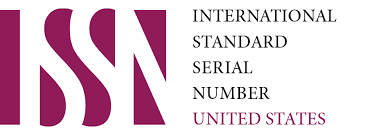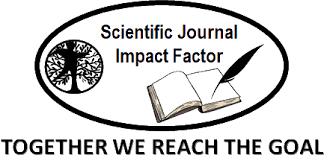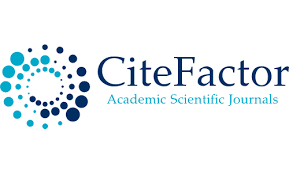Physical Basics of Semiconductors
Keywords:
Metal, semiconductor, dielectric, electronAbstract
The article outlines the fundamentals of materials science and semiconductor technology, which allow one to gain a general understanding of the basic laws of formation of semiconductor phases, the mechanisms of their growth, production conditions, as well as to gain an understanding of the most widely used industrial methods for the production of bulk semiconductors and epitaxial semiconductor films with specified properties. This knowledge is necessary for students specializing in semiconductor physics to understand the specialized literature. Indeed, almost every article devoted to the study of the properties of semiconductors or the creation of devices based on them begins with a description of the method for producing the material, since its properties, as will be shown in this course, are closely related to the method of its production.
References
Imomov Sh. B., Kodirov I.N., Mamatova M. Sh., Panjiev J. E Thermal efficiency of the solar heating
system based on flat reflectors installed from the Northern side of the building // Austrian Journal of
Technical and Natural Sciences. 2018. №5-6.
Kodirov I. N. et al. Thermal efficiency of the solar heating system based on flat reflectors installed
from the Northern side of the building //Austrian Journal of Technical and Natural Sciences. – 2018.
– №. 5-6. – С. 25-26.
Kodirov I. N., Sh M. M., Panjiev J. E. Thermal efficiency of the solar heating system based on flat
reflectors installed from the northern side of the building //Austrian Journal of Technical and Natural
Sciences. – С. 25.
Kodirov I. N. et al. Investigation of surface layers composition of the silicon epitaxial films used in
the printed circuits //Uzbekiston Fizika Zhurnali. – 1996. – Т. 3. – С. 31-35.
Kodirov I. N. The perspective of ion implantation and annealing using in microelectronics;
Perspektivy primeneniya ionnoj implantatsii i otzhiga v mikroelektronike //Uzbekiston Fizika
Zhurnali. – 1998. – Т. 4.
Kadirov, I. N. (2023). Semiconductors and their electrophysics. Educational Research in Universal
Sciences, 2(11), 416–420.
Uzakov, G. N., Toshmamatov, B. M., Kodirov, I. N., & Shomuratova, S. M. (2020). On the
efficiency of using solar energy for the thermal processing of municipal solid waste. Journal of
critical reviews, 7(05).
B. Toshmamatov, I. Kodirov and Kh. Davlonov. 2023 Determination of the energy efficiency of a
flat reflector solar air heating collector with a heat accumulator. E3S Web of Conferences 402,
Toshmamatov, B. M, Uzakov, G. N, Kodirov, I. N & Khatamov, I. A. (2020). Calculation of the heat
balance of the solar installation for the thermal processing of municipal solid waste. International
Journal of Applied Engineering Research and Development (IJAERD) ISSN (P): 2250–1584; ISSN
(E): 2278–9383 Vol. 10, Issue 1, Jun 2020, 21–30.
Uzakov G.N., Novik A.V., Davlonov X.A., Almardanov X.A., Chuliev S.E. Heat and Material
Balance of Heliopyrolysis Device. ENERGETIKA. Proceedings of CIS higher education institutions
and power engineering associations. 2023; 66(1):57-65. https://doi.org/10.21122/1029-7448-2023-
-1-57-65
Uzakov, G.N., Almardanov, X.A., Kodirov, I.N., Aliyarova, L.A. Studying the temperature regime
of the heliopyrolysis device reactor. E3S Web of Conferences, 2023, 411, 01040 DOI:
1051/e3sconf/202341101040
X. Davlonov, Study on heat and material balance of heliopyrolysis device, AIP Conference
Proceedings, 2686, 020023 (2022)
Almardanov, X. A., et al. "Application of solar concentrators to obtain alternative fuel through a
heliopyrolysis device." Universum: Technical Sciences 3 (2021): 8-12.
Almardanov, H. and Chuliyev, S. 2022. Biomassadan geliopiroliz usulida yoqilg‘i olish tajriba
qurilmasining parametrlarini asoslash. Innovatsion texnologiyalar. 1, 4 (Nov. 2022), 92–96.
Davlonov, X. A., X. A. Almardanov, and I. A. Khatamov. "A program for modeling and calculating
the exergic balance of a heliopyrolysis device to obtain alternative fuels from biomass." No DGU
(2021).
Downloads
Published
Issue
Section
License

This work is licensed under a Creative Commons Attribution-NonCommercial 4.0 International License.
User Rights
Under the Creative Commons Attribution-NonCommercial 4.0 International (CC-BY-NC), the author (s) and users are free to share (copy, distribute and transmit the contribution).
Rights of Authors
Authors retain the following rights:
1. Copyright and other proprietary rights relating to the article, such as patent rights,
2. the right to use the substance of the article in future works, including lectures and books,
3. the right to reproduce the article for own purposes, provided the copies are not offered for sale,
4. the right to self-archive the article.












